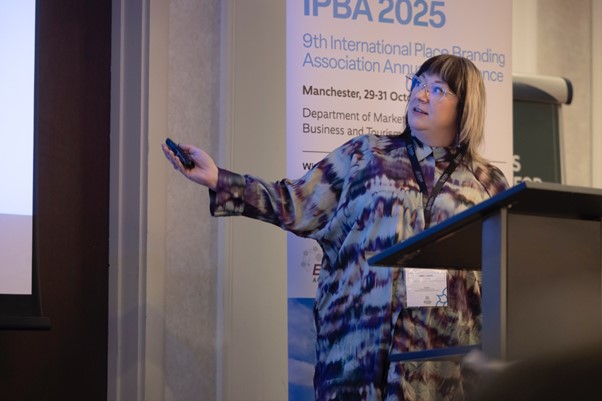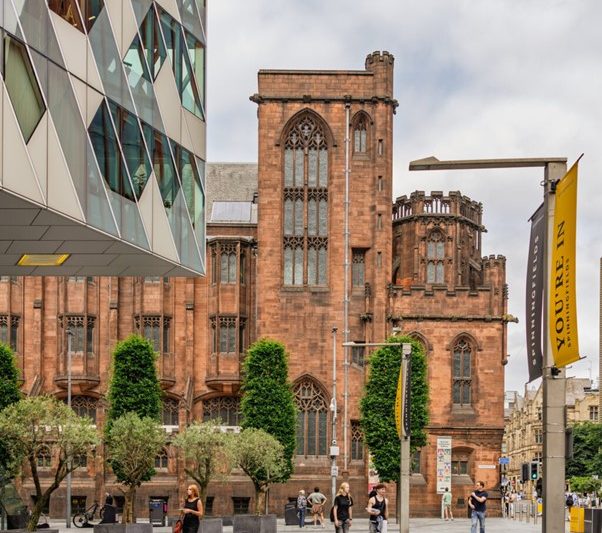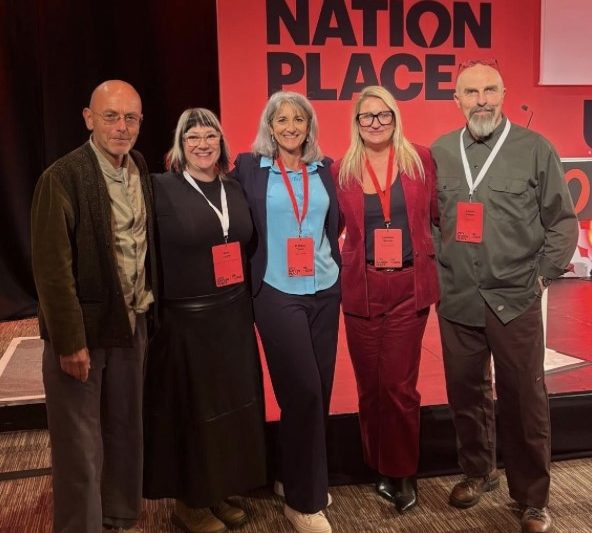‘Immersive’, ‘digital’, ‘art’, and ‘experience’ are some of our favourite words here at CTConsults. And with two new exhibitions opening recently at MediaCityUK, we had to take a team trip to check them out.
Immersive digital art experiences continue to pop up across the UK (e.g. Van Gogh Alive, David Hockey: Bigger & Closer) and while they promise impact and innovation, they can often leave audiences feeling… a bit whelmed. Visually dazzling and very Instagrammable, these shows don’t always deliver much depth – so we approached both with curiosity and a dose of healthy skepticism.
First up was Lowry 360, the UK’s first permanent immersive digital art experience, commissioned as part of Lowry’s 25th anniversary. This free experience lasts about six minutes and explores Lowry’s most famous work, Going To The Match. By gathering visitors into a small, fully projected space, the audience becomes part of the crowd heading to Bolton Wanderers’ stadium on match day; a deep dive into the characters and context of the painting.
We were impressed. Team members new to Lowry’s work left with a clear sense of his style and subject matter, brought to life through effective use of animation and sound. Narration by BAFTA-winning Bolton native Sophie Willan – whose career began at Lowry theatre – added warmth and authenticity to the experience. A few of us did wonder what Lowry himself would have made of his characters waddling across the walls, but overall, it was a thoughtful and accessible introduction to the original artwork on display just outside the space.

Next, we visited Unframed: Stories Brought to Life – a touring immersive experience from the National Portrait Gallery, produced by FRAMELESS. Drawing on 12 portraits from the collection, the show weaves together each sitter’s story in a continuous 45-minute loop, with audiences free to move around the space and come and go as they please. With ticket prices set at £15 in advance (or £23 on the day), it promised a more substantial experience – and came with higher expectations to match.
While the storytelling was often strong – particularly when living subjects like Grayson Perry narrated their own vignettes – the overall experience felt more limited than promised. Visually, it lacked the expansive, boundary-blurring quality that “immersive” suggests. Unlike Lowry 360, the ceilings and floors were left blank, and the large, open layout further diluted the sense of immersion. More importantly, the portraits felt distant, both literally and conceptually. While we knew the exhibition focused on the sitters’ stories, we also expected some insight into the portraits themselves, or the artists, or the practice of portraiture. And with no original artworks on display in Salford, it raised questions about context and purpose.
In the end, our visit sparked exactly the kinds of conversations we hoped for. As a team, we’re still questioning whether immersive art experiences are truly deepening cultural engagement, or simply delivering spectacle. Lowry 360 won us over with its tight focus and clever pairing of digital and physical – a promising model, especially as a free experience designed to complement an existing collection. But Unframed, while ambitious in scope, lacked cohesion and felt disconnected from the art, struggling to justify its price or presence in Greater Manchester.

Are immersive experiences part of the future of engaging new audiences with art? Possibly – but only when they’re built on more than just visual wow-factor. It’s a new medium that curators will master over time. The good ones remind us that immersion works best when it leads us somewhere meaningful.




